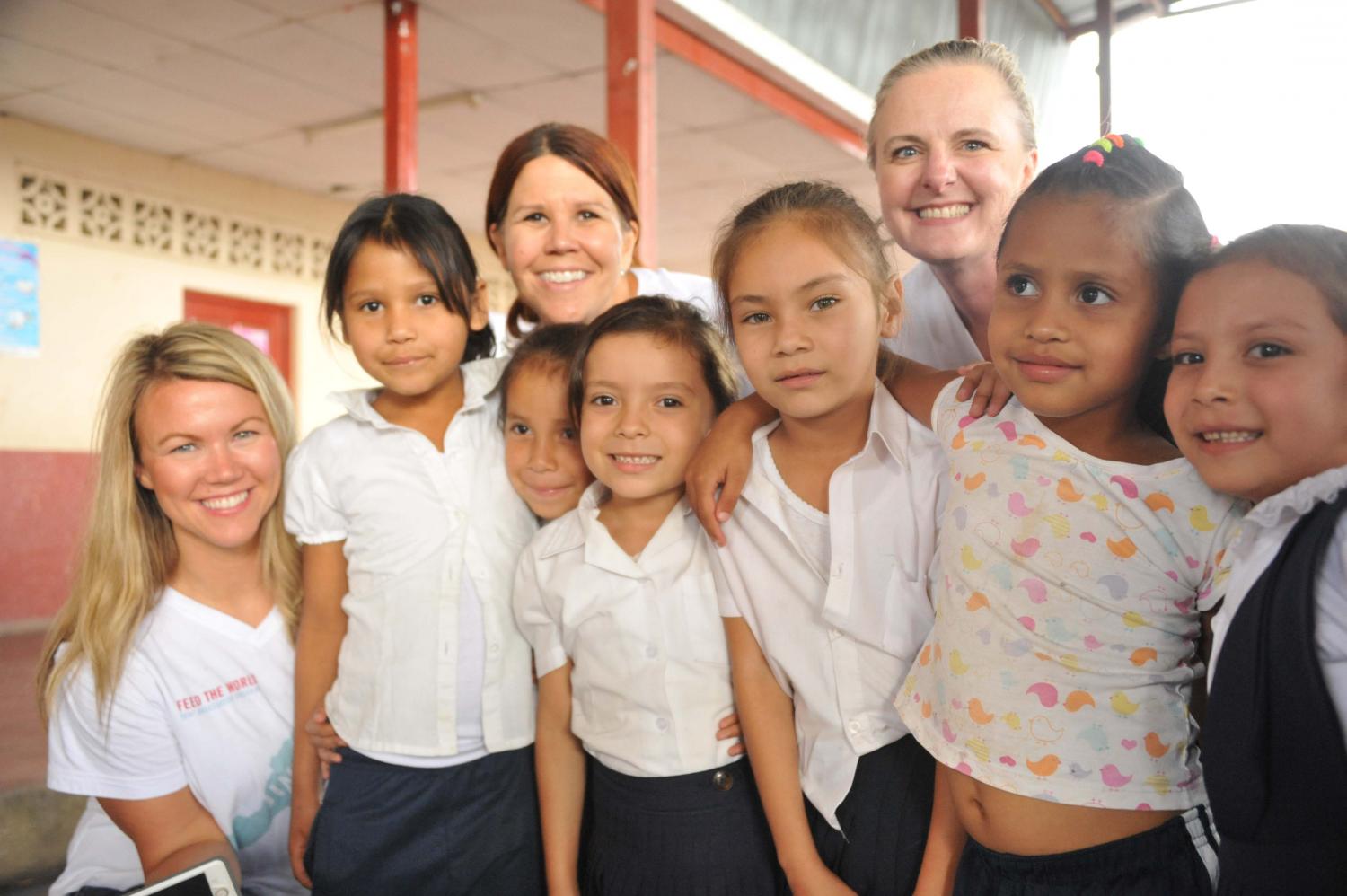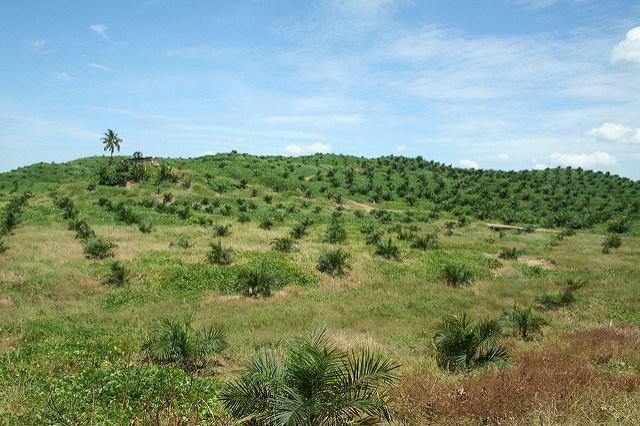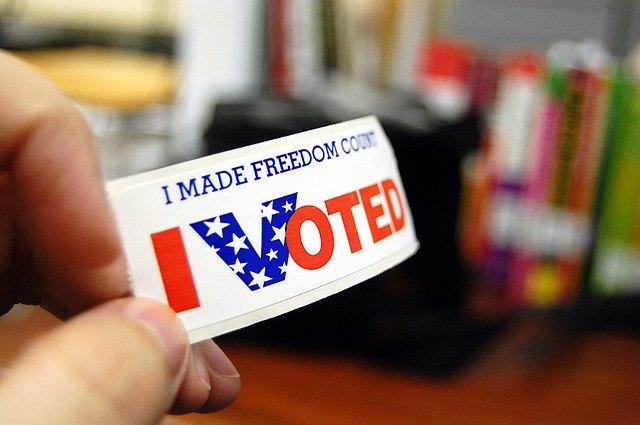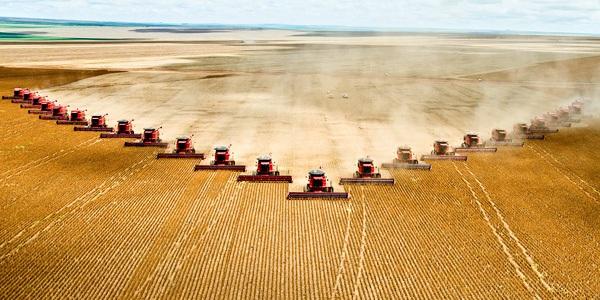Activating America’s Problem-Solvers: 5 Solutions for the Next President


By Deborah Smolover
Manuel Robles, a high-school junior from the South Side of Chicago, doubted the value of his IT training through GenesysWorks – until the organization helped him secure a paid internship at a Fortune 500 company and provided him with a team of college prep advisors.
After retiring from the U.S. Navy, Tonya Cook felt lost, unsure of what to do next, and how she could continue serving her country and community. Then, she found the Mission Continues, which offered her a six-month fellowship program and service opportunities for veterans.
When Iris Henriquez faced reduced hours at work and possible eviction from her home, she had nowhere to turn for financial support and guidance – until she connected with LIFT Los Angles, a community service organization that provided Iris with an emergency grant so she could afford to keep her home, as well as financial counseling.
These are just a few powerful examples of how community-based organizations across the country are finding new ways to solve some of our nation’s biggest challenges — from education and poverty to criminal justice and workforce development.
Yet, while these solutions are out there waiting to be tapped, inertia, political divisiveness, and overemphasis on compliance have frozen in place ineffective and inefficient systems designed decades ago. And our policies are failing to support and expand those programs that are actually making a difference in our communities.
That’s why more than 70 innovative, impact-oriented organizations have joined the America Forward Coalition to promote policies that turn what is working in communities into large-scale, national change. Our members are driving progress in education, youth development, workforce development, poverty alleviation, criminal justice and government efficiency in more than 14,500 communities across the country, touching the lives of nearly 8 million Americans each year.
Specifically, the coalition offers the next president the following five solutions to our nation’s most pressing social problems:
1. Ensure that we have a government that works
The next president can increase the efficiency and effectiveness of taxpayer dollars, and move government into the 21st century by investing in technology and innovation, making data accessible, measuring outcomes, and breaking down silos. Government should fund programs based on outcomes, and increase efficiency through Pay for Performance models that facilitate public-private-nonprofit partnerships.
For example, in Boston, as well as Cuyahoga County, Ohio, Third Sector Capital Partners develops cross-sector partnerships to leverage Pay for Success models to invest in programs and increase the efficient, effective use of taxpayer dollars.
2. Redesign education for the future
The next president can help secure the future of our nation by accelerating school improvements that expand opportunity, achievement and success for all. This means empowering schools to define student advancement based on mastery, rather than seat time, and personalize learning to meet the needs of all students by harnessing technology and building teacher capacity.
For example, in Washington, D.C., the AppleTree Institute for Education Innovation collects and uses data to individualize instruction as an integral part of the Every Child Ready model in order to ensure lesson mastery for its preschool students.
3. Create pathways to opportunity for today’s students
The next president should enable students to attain marketable post-secondary credentials by addressing barriers to post-secondary completion such as transportation, child care and food insecurity. Government should encourage the integration of public- and private-sector systems of support to increase college completion and reward colleges that provide strong supports for students that lead to graduation and meaningful work.
For example, from Miami to the Bronx, Single Stop partners with some of our nation’s largest community college systems to provide coordinated access to services for college students who struggle with barriers outside of the classroom.
4. Focus on first jobs
The next president can mobilize private-sector employers to provide first-job opportunities to put young adults on career pathways. Government should support private-sector investment in human capital through tax credits when first-time hires earn an industry-recognized credential, and when businesses provide apprenticeships and other employment pathways for young adults who were neither in school nor in the workforce.
YearUp, for example, partners with corporations to ensure that young adults who participate in the program are connected with internship and apprenticeship opportunities in the private sector where they can earn college credit, credentials and stipends.
5. Give Americans a second chance
The next president can build on-ramps to opportunity and a second chance at a better future for citizens who have turned their lives around. We can do this by prioritizing federal justice grant applicants that propose community partnership approaches to reduce behavioral issues that increase a young person’s risk of incarceration, and by developing evidence-based approaches to reduce involvement in the criminal justice system.
Coalition organization, Roca, a service provider in the Massachusetts Juvenile Justice Pay for Success Project, leverages an intervention model that targets high risk young people in order to disrupt the cycle of incarceration by helping them transform their lives.
America is a nation of innovators and entrepreneurs. Even in moments of divisive rhetoric, we can find common ground and move forward together to address critical challenges and unleash the unlimited potential of individuals. We can make government and policy more responsive and reflective of the local solutions that we see every day in communities across our nation. Solutions to our nation’s most intractable problems are out there, waiting to be tapped. The time is ripe to translate these local solutions into national change.
Image credit: Flickr/LBJ Library
Deborah S. Smolover is a Managing Partner of New Profit and leads New Profit’s policy work, advocating for more innovative, effective, and efficient policy solutions to our country’s most pressing social problems affecting access to opportunity in America. She also serves as the Executive Director of America Forward, New Profit’s nonpartisan policy initiative. America Forward’s mission is to unite social entrepreneurs with policymakers and advance a public policy agenda that fosters innovation, rewards results, and catalyzes cross-sector partnerships. Visit www.americaforward.org.
How Yum! Brands Engages Local Communities Worldwide


Editor's Note: This piece was written by TriplePundit editorial staff on behalf of Yum! Brands.
As consumer tastes evolve past the products companies provide to what the company stands for, many restaurant companies are beginning to see the value helping to build up the local communities they operate in. These companies are using their expertise to address social challenges occurring in developed and developing nations alike.
Yum! Brands is a leader in driving community impact by working to make food accessible to the less fortunate around the globe. The restaurant company, which has nearly 43,000 restaurants in over 130 countries and territories worldwide, gives back to the communities in which its brands operate making a positive difference in the lives of their customers, employees, franchisees and their families.
In fact, Yum! Brands’ executives, managers and employees have implemented many forward-thinking community programs over the years, which include addressing challenges related to education, food scarcity, literacy and community engagement. Each of the company’s brands, KFC, Pizza Hut and Taco Bell, have shown leadership on these issues in striving to make the communities in which they are located a better place to live and work.
Since 2007, Yum! Brands has raised over $640 million in cash and food donations in order to curb hunger worldwide. Various programs have added much needed capacity to many local initiatives, including food banks and hot meal programs, across six continents. In Asia, for example, Yum! Brands’ programs, including Pass the Red Cup, helped to provide 19 million meals in 2015. The company has worked with non-profits, and celebrities including Christina Aguilera, to raise awareness about hunger while seeking donations of as little as $5, an amount the company says can feed as many as 20 children.
The company’s KFC brand has been successful at leveraging the skills of its employees and managers in order to tackle hunger. For example, KFC has worked on a variety of hunger campaigns that have contributed to 14 million meals distributed in South Africa last year, an effort critical in a country where over 53 percent of households live under the poverty line. One initiative, KFC Add Hope, succeeded in raising $3.7 million in 2015, enough to feed 100,000 South African schoolchildren daily over the course of the year, helping to keep them focused on their studies and build a better future.
The company has also focused its work related to hunger within its wealthier markets: KFC France’s work with the charitable organization Les Restaurants du Coeur contributed to offering 2 million meals to needy families throughout France during 2015. Halfway across the world, employees at both KFC and Pizza Hut worked with the United Nations’ World Food Program to fund a wide range of efforts, including social media campaigns and events at cricket matches, to deliver 3 million meals to hungry Australians.
Pizza Hut has also been at the forefront of making its meals more healthful while assisting with hunger relief campaigns worldwide. In addition, its commitment to being a company that “Lives Life Unboxed” also has worked to improve literacy. In fact, for over 30 years, the company has run BOOK IT!, the largest corporate-funded reading program in the U.S. In fostering a lifelong love of reading, this program, available in schools or to home-schooled children, operates a six-month program for students from kindergarten through the sixth grade. Each year, at least 14 million children in 620,000 classrooms participate in the program. In addition to a smartphone app, BOOK IT! manages a volunteer program, and also offers students the chance to win a college scholarship.
On education, Yum! Brands other popular restaurant, Taco Bell, leverages teenagers’ affinity for its food into expanding opportunities for young Americans. Since 1992, the Taco Bell Foundation has offered higher education opportunities to thousands of youths; this year a total of $1 million in scholarships is available. Through the Live Más Scholarship fund, 220 scholarships, ranging from $2,500 to $25,000, will be available for future creators, dreamers and innovators—without applicants having to wrangle with the submission of essays or test scores. The company says it has distributed educational and job training support to at least one million teens across the U.S., with another $75 million provided for scholarships and grants for five million young Americans. Amongst its numerous 2020 goals, Taco Bell says it wants to contribute to increasing the U.S. high school graduation rate from 81 percent to 91 percent in four years. With its 36 million customers—many of them in their teens or twenties--visiting its 6,000 restaurants each week, the company has capitalized on showcasing the need to expand educational opportunities for the nation’s future leaders.
“Our three iconic brands continue to demonstrate that we’re a company dedicated to feeding the world, not only for profit, but also for good. Collectively, we’re focused on making courageous decisions every day that deliver on the CSR commitments our consumers and stakeholders truly care about when it comes to our food, people, communities and environment,” said Greg Creed, CEO, Yum! Brands.
By not only raising, but delivering on, these important issues related to local economic development, Yum! Brands has set the standard for community engagement within the global food and restaurant sector. In strengthening its partnerships with organizations such as Get Schooled, the Boys and Girls Clubs of America, and Dare to Care Food Banks, the company shows how partnerships with non-profits can help address some of society’s most pressing social issues while preparing today’s youth to be tomorrow’s leaders and visionaries.
Image credits: Yum! Brands
Building an Economy Worthy of Our Affection


“Overturning a previously accepted paradigm does not come about
from gathering new facts that call the paradigm into question.
Mere logic does not change people’s minds. A society’s grasp needs to be
loosed by something other than logic, something far deeper and more
difficult to articulate that we call by various names: emotion, the irrational, the metaphysical.
Or by Faith…”
Thomas Kuhn – "The Structure of Scientific Revolutions," 1962
By Edward L. Quevedo, J.D.
We who read these worthy pages share much in common – a passion for making the world a better place; a vision for social enterprise heightened by respect for the innovators who have come before us; or perhaps a clear and burning desire to build our own enterprise to contribute to the greater good.
In these times of rapid and compelling change, and in a season of political upheaval, it is worth asking about the bigger picture: What are we hoping to achieve in the larger economy? I would offer a curious and perhaps naïve notion. Can we imagine and build an economy worthy of our affection?
Doing so seems well beyond our reach at a time when the economy has taken on the dimensions and character of a heartless machine. The dominant economic model, conceived and built in an era of consolidation of the “means of production,”* seems a far cry from one worthy of affection and care.
Our global economy feeds on domination by a privileged few companies and wealthy families. It relies on a top-down approach to production of consumer products.
A top-down approach to life can work wonderfully. The sun shines down on fields of sunflowers in Provence, of edelweiss in the Bavarian Alps, or of poppies in the California foothills. The light from the sun activates the chlorophyll in the flower’s cells and converts carbon dioxide into sugar from air and water, fueling the flower’s roots, stems and leaves. And ultimately its growth and development.
A parent stops in mid-thought to look at her daughter’s curious face, and anticipates her question with an empathetic response. From the wisdom and experience of the parent’s life to the open curiosity of the child’s inquiry flows love and understanding, fueling the child’s grasp of the world around her. And ultimately her growth and development.
In these instances, a top-down element brings value to the participants, be they part of the larger ecosystem or humans interacting in the space of love, life, or education. In truth, though, these are not top down arrangements. The nourishing flows of nutrients -- be they physical or psychic, emotional or intellectual -- is circular, systemic and flowing.
In our mechanistic economy, however, it could well be concluded that the top-down structure has failed, has had its time, and is in need of a fundamental re-think. Whilst certainly contributing to unprecedented levels of material prosperity, our top-down economy also stands responsible for destroying communities, crushing ecosystems, and creating intolerable living conditions for most humans on the planet -- fomenting a stark absence of any semblance of social justice.
How might we re-imagine the economy, at scale, in line with a sense of humanity and fairness at its heart? As noted above, there are many innovations in confined corners of the global economy that are at odds with the dominant model painted here. Our task, though, if we are to do more than whittle away at the edges, is to mainstream these innovations.
To begin examination of how we might accomplish this, consider three basic building blocks of modern society: education, banking institutions and the financial markets. Powerful new models offer themselves for study in these three domains that use systemic, graceful engagement and inclusiveness to challenge the mechanical inhumanity of the dominant economy. If mainstreamed, these new models hold inestimable power to restructure our economy for the better.
Much of education today is designed to use standardized testing and curricula to build consumers. The pathway of default for education in the U.S. is college. This approach degrades the dignity of the honorable trades, and dooms tens of thousands of our most promising children to disappointment if college is not right for them. But the approach is just right for building consumers in their millions. Can we do better? Can our schools focus on inspiring the next generation of citizens driven by passion rather than consumers driven by pursuit of material wealth?
Instead of a top-down model focused on standardize learning and testing, a number of innovative primary and secondary schools** strive to ignite their students’ passions, and let that drive their learning. This approach to learning is, in general terms, informed by this progression:
- What do the students consider important in terms of real world problems or issues of which they are aware? What are they most interested in learning about now?
- Which subjects (in terms both of learning studio subjects and social issues) spark their curiosity?
- How can or might they engage with the specific content they have identified?
- How might they choose to demonstrate their learning?
- What tools and support will they need to progress their learning?
Of course, students at various developmental levels will show varying aptitudes for use of this model. But these schools’ individualized approach to learning, and the unique learning environments they foster, generally account for these differences and help students build their confidence and alacrity in taking advantage of this approach. It might be possible, if this model were to germinate and propagate, that the next generation of citizens would seek not jobs, not careers, but their calling and true purpose in the world. Such workers would surely demand and contribute to building an economy worthy of their affection.
Conventional models of financial institutions reflect the same massive, mechanical forces that drive the global economy: size, consolidation, and relentless growth. Many commentators have focused on precisely these characteristics of financial institutions as causes of the global financial collapse of 2008. But how to reimagine these institutions? Can we build a bank worthy of our affection?
Consider instead the example set by Beneficial State Bank in California, Investors Bank in New Jersey, and Triodos Bank in The Netherlands. These institutions are community focused and report and measure the creation of value via development of community well-being vs. growth for its own sake. These institutions focus on empowering their customers, borrowers, and investors with the tools for financial literacy, agency, and independence. The stakeholders who choose these banks might, if they reflected on the matter, be seeking (and finding!) banking experiences that cultivate affection and not just profit.
In terms of financial markets, these are driven the world over based on quarterly returns, creating a relentless drive for unsustainable levels of performance to report favorable quarterly earnings. Recently, we are seeing instances of new, more nuanced, and more sophisticated ways of evaluating the creation of value in markets, based on a more inclusive and holistic approach. I refer to this model as Regenerative Economic Development.
This model calls for conducting corporate operations, and making corporate decisions, with the goal of generating net, measurable, and simultaneous gains in:
- Ecological well-being (improving eco-systems performance improvements),
- Social and community capital (enhancing social conditions and community development), and
- Long term, enduring financial profitability (building financial resiliency).
Companies as large and wide-reaching as Mondragon Corp. and Infosys Software, and as unique and small as Guayaki, are using elements of this regenerative model to reinvent how they report corporate performance and the creation of value.
I have mentioned here only a few examples of powerful disruption within education, banking, and financial markets. But by participating in and propagating the work of these organizations, I firmly believe that we can all contribute to flipping the dominant economic script. In doing so, each of us has the power to inspire, to forge coalitions of unapparent and non-obvious collaborators in common purpose, and to help us to usefully broaden our vision of the kind of world we are working to bring about – the state of affairs towards which we labor: an economy worthy of our affection.
* Considered broadly, these include capital, labor, and resources.
** Among others, we would include the Jefferson County Open School in Colorado, University Park Campus School in Massachusetts, Hood River Middle School in Oregon, and the Summerfield Waldorf School in California.
Image credit: Paul Jarvis via Life of Pix
Edward Quevedo is an educator and writer, and directs programs in Peace & Social Justice and Future Economies as a Research Affiliate at the Institute for the Future.
Why So Many M&A Deals End in Failure


By Lisa Coffey
Mergers and acquisitions (M&A) has become a bit of a buzzphrase of late. It appears that, lured by the benefits of a hot market and huge amount of cash paid by buyers, many entrepreneurs want to jump on the bandwagon to sell their companies. And it gets interesting: The eminent baby boomer tsunami has all the makings of surpassing any rate of sales in the history of M&A. Such circumstances engender a competitive environment among sellers and leads buyers to scrutinize the quality and price-value relationship of any realistic acquisition.
In the recent past, owing to such advantages as strong earnings, favorable capital markets and lower interest rates, many buyers aspired to grow their businesses swiftly through the means of acquisitions as opposed to organic growth. That makes one wonder that sellers must have a jolly good fund in selling their business.
But that's far from the actual reality. Arizona Republic management consultant, Gary Miller, writes: "80 percent of small and middle market business owners who put their businesses up for sale never close the transaction." Through keen observation, we fathom some of the reasons that contribute to the failure of the mergers and acquisitions are very basic at their core. Read on to find out what they are:
1. Lofty value expectations
The most common reason why M&A deals fail to close is because the seller's valuation expectations are highly unreasonable.
As business owners come to hear about the companies or competitors operating within the same industry, selling for much higher valuation, they can delude themselves into believing that their business might be worth the same value.
2. Falling behind the game when it comes to "strutting your stuff"
A number of business owners lack that all-essential edge when it comes to attracting buyers. If you won't throw a bait, there's very little chance that you'll catch any fish. The principle works very similarly in the realm of mergers and acquisitions: Companies that are able to make the best show of their abilities are generally the ones that walk out with the best deals.
The root cause is often poor strategic planning. Due to poor planning, business owners fail to coherently express the company's competitive advantages, its revenue potential, the growth opportunities and the ability to offer significant returns on invested capital.
Audited financial statements provide a sort of surety about the financial accuracy and assist validating the forecasted performance. Dearth of clarity and evidence regarding major business drivers, sales pipeline backlogs, back office operations, and the stability of growth and earnings discourage buyer's willingness to move on to the due diligence.
3. The timing of the deal
The success of a deal depends on its timing as much as anything. The pendulum of a deal swings back and forth all the time, and making your move at the right moment is crucial to your success.
M&A experts like to say that time is the enemy of all deals. If the deal process is protracted, both the buyers and sellers can start to lose interest. Bog standard and unduly drawn-out due diligence analysis of financial and strategic matters prove to be the final straw. If the buyer hasn't got an able due diligence team, or the seller is not fully prepared for the buyer's due diligence process, the deal could lose precious momentum.
4. Disclosure of material changes
Material changes in a business come unannounced. Oftentimes, such changes are beyond seller's sway (e.g. recession, losing out an important client or a key employee), but can still adversely affect the deal closing out.
Therefore, in case a material change does occur, it's binding on the seller to disclose it promptly and fully to the potential buyer. Failure to be up front about a material change could destroy a buyer's trust in the seller.
5. Painful re-negotiations
If negotiating the terms, conditions, structure, representations and warranties won't tire you in one go, it will in the second. Renegotiating a settled deal is a catalyst. No one's likely to go back-tracking, barring exceptional cases, because the deal components that have been agreed upon previously. These tiresome, monotonous and mentally-draining tasks could make the deal lose its momentum and on top of that add time and engender deal fatigue. Furthermore, it gives rise to distrust and makes the engaged parties skeptical of the rest of the components of deal previously negotiated.
6. Disproportionate concentration of customer/vendor
The buyer's perception of risk is heightened if it's found that a considerable amount of revenue is concentrated among a handful of customers, or the supply chain raw materials are concentrated in one vendor.
Irrespective of the longstanding relation that the seller may have with any customer or vendor, buyers still like to take into consideration the potential loss of them. One can never write off the possibility of buyer walking away from the deal upon mapping out the consequences of such loss.
7. Inconsistent internal controls
On a number of occasions, the buyer's due diligence process will reveal inconsistencies in internal controls (eg, poor collection processes for aged receivables, manufacturing error rates, tarnished financial statements, regulatory filing inconsistencies). It could send a straight signal to the buyer that the business isn't run well.
Operating efficiencies become contentious when there's a lack of effective internal controls. And once the seed of doubt is sown in the buyer's conscience, the deal could start the journey southward very easily.
8. Fighting it out until the last dollar
It's perfectly understandable that the sellers who've put in so much effort in their business want to earn every last penny out of it. But very few owners are lucky enough to get their wish. The mistake that sellers shouldn't make is fixating their minds on a particular price for the company. Lots of owners pass on a deal, thinking they'll get a better deal from the next potential buyer. But there have been instances where multimillion-dollar deals were lost for just a few thousand dollars.
That's why a more rational approach is required. The seller should examine all the component of the deal's structure, and not just the final offering price. If the deal satisfies their exit plan goals, they should nod along and go ahead with the deal.
9. “No” to expert advisors
It goes without saying that a quality deal is essential to a deal's success. Most business owners do well to build a successful business, but seeking to monetize the same in some form of exit is still their Achilles heel. Most business owners have never sold a business, so for them it’s a once-in-a-lifetime event. Therefore, they lack the necessary skills to see the deal through on their own.
Research suggests that owners who shun themselves from taking any outside help, and go it alone to strike a deal, often leave with money on the table. The reason: They fail to get the best terms and conditions on the transaction.
The bottom line
These are just the nine main catalysts for any M&A deal failure. But there's a way around them. Expert opinion suggests that a successful deal team must have these five key members:
- An experienced M&A consultant who could lead the team from the front
- A shrewd wealth management team that can help the firm maximize the proceeds and cut down the tax obligations from the sale of the company.
- A transaction law firm that has all the necessary transaction experience and expertise
- A transaction accounting firm that is well-aware of the tax implications of assorted deal structures and that can work in sync with the owner's wealth management firm
- A meticulous investment banking firm with in-depth industry experience in the space, major valuation expertise, and negotiation and closing transaction skill sets.
Collectively such an impeccable deal-team can ensure that your interests are safeguarded and you get the best deal that's there for you.
Image credit: Pexels
Lisa Coffey presents ideas to empower companies to make evolutionary leaps in their go to market strategies and assist entrepreneurs catapult their small business into the 21st century by utilizing these business strategies on Investmentbank. A free spirit, residing in Salt Lake City, Utah, she has been a writer for 5 years with over 500 published articles.
Suspended Palm Oil Producer Drops Lawsuit Against RSPO


Palm oil has become a massive business, and while its total value is difficult to assess, CNN reports suggest the global market for this product could be as high as $50 billion. Few people actually cook with palm oil or have even seen this raw material, but WWF says at least half of the world’s consumer products include it as an ingredient. As a result of that rising demand, the palm oil industry has been tied to environmental destruction in countries such as Malaysia and Indonesia, and those concerns led to the rise of the Roundtable on Responsible Palm Oil (RSPO).
Despite the efforts of RSPO, the evidence suggests that demand for palm oil, which is used in everything from packaged cookies to biofuels, is still causing rapid deforestation. Companies accused of contributing to deforestation can often trace these allegations to their palm oil sourcing policies. Criticism of the industry and its customers are intensifying; Rainforest Action Network, for example, recently issued a report accusing an Indonesian producer of PepsiCo-branded foods of being complicit in human rights violations resulting from the palm oil industry's operations in that country.
Last year, the growing outcry over alleged abuses by palm oil suppliers led to the RSPO suspending many of its members. But many environmental organizations and human rights activists were still unsatisfied with the progress made within the palm oil industry. One NGO’s investigation of one of the world’s largest palm oil suppliers led to Unilever cutting ties with that company. The company in question, IOI Group of Malaysia, was a founding member of the RSPO. But the sustainable palm oil standards organization determined the company was not meeting its obligations and then suspended the company. IOI then sued RSPO in a Swiss court, demanding reinstatement based on what it said were technicalities over the terms of its suspension.
The spectacle proved to be too much for many food companies -- which are increasingly under more stakeholder pressure to source all raw materials responsibly, whether they are grains, soy or even the energy they use to power their operations. The global food conglomerate Mondelez International, for example, urged IOI last month to cease its litigation against the RSPO. Considering the risk to its long-term business -- and the fact that companies including Mars Inc. and Kellogg’s followed Unilever’s lead and dropped IOI as a key supplier -- the company’s executives have apparently realized they should follow the standards of the organization that they helped establish in the first place.
Earlier this week, IOI announced that it would withdraw its lawsuit against the RSPO. The legal challenge will be officially canceled during a hearing scheduled for June 14.
In addition dropping the litigation, IOI insists that it will comply with the the RSPO Next certification system by the end of this year. This program, which the RSPO says is a more stringent set of guidelines than the standards previously issued by the organization, was drafted with the goal to accelerate efforts to stop the industry’s deforestation and rising greenhouse gas emissions. In order to be eligible for this certification, growers must prove that 60 percent of their palm oil farms are already compliant with RSPO policies. In addition, the standards include the following: a strict no-deforestation policy; an absolute ban on planting within peatlands; no use of fires; disclosures that prove fair agreements have been made with workers on living wages and labor rights; and a complete ban on the use of the pesticide Paraquat.
Reactions to IOI’s about-face have been tepid at best. Aidenvironment, one of the NGOs whose investigations led to the company’s suspension from the RSPO, said in a written statement, “It is too early to say that the requirements set by the RSPO Complaint Panel have been met." And in a knock on the organization and its members, the NGO added, “We invite RSPO to discuss some important lessons-learned from [these] complaint proceedings.”
Image credit: Angela Sevin/Flickr
Consumers Leave the Nest as Smart Home Technologies Struggle


Over the past decade, many of us were optimistic about next-generation technologies that would revolutionize the way we live while mitigating risks related to climate change. In this vision, clean energy and smart technology would join forces to reduce costs, decrease our impact on the environment and create new economic opportunities as consumers would gravitate to this new “smart cities” lifestyle, in part powered by smart grids weaning us off utilities as we inhabit much more efficient homes.
Yet despite plenty of fits and starts plus the two-year slump in oil prices, renewables are scaling rapidly and decreasing in price while smart devices, especially those designed for the home, have sputtered in popularity. So, what’s going on?
The answers can be in part explained by the struggles of Nest and the resignation of its chief executive, Tony Fadell, last week. Fadell simply claimed that “the time is right to leave ‘the nest’,” but other forces were at play.
The smart device designer, known mostly for its innovative and popular smart thermostat, had its fair share of problems that metastasized soon after Google purchased the company in 2014 for $3.2 billion. At the time of its acquisition by Google, Nest’s new “smart” smoke alarms proved to be quite dumb to buyers with their false alarms and the fact that its “hush” feature appeared to work a little too well. The Revolv, a "smart home hub," was also widely panned and then mothballed.
Nest also became notorious for its high employee turnover rate, with one former employee lashing out at Fadell for allegedly throwing his product team under the bus. Fedell gave Bloomberg a more sunny assessment of his tenure and Nest’s days as part of the Google family. But chatter on sites like Reddit suggest a toxic work environment and a company slow to roll out new devices yet quick to miss anticipated sales targets.
But Nest’s struggles aside, the truth is that many consumers are just not ready to live in, or do not want, a smart home. As an Accenture study released earlier this year suggests, consumers’ interest in technology has plateaued for the moment. According to that survey, only 9 percent of consumers expressed interest in buying a smart thermostat in the next 12 months, and even more telling, that percentage didn't budge from the previous year. Hence we have the reason for why the only smart thermostat we hear about on the market is the one made by Nest. Other companies, such as Honeywell, manufacture smart thermostats, but hardly market them aggressively. One would think there would be an opening in the market considering the buggy reputation Nest’s thermostats have, but no company has rushed in to try to seize this market. The opportunity for smart home devices, companies have realized, is just not there.
The fact is that home appliances are more energy efficient then ever, and for many consumers, those investments make their homes smart enough. Add the fact that we are at a time when residential solar installations are proving to be more cost effective, and more opportunities to participate in community renewable power projects are hitting the market, consumers have more options to make their daily living guilt-free and more sustainable. A two-story, 3,000-square-foot home could benefit from a Nest thermostat; my 900-square-foot, single-level condo shaded by trees with no passive heat does not. And as urbanization increases, and more millennials and empty-nesters move to cities, they realize the smartest decision they can make is to live in a smaller space in the first place.
Image credit: Nest
Following Controversy, Airbnb Reviews Anti-Discrimination Policy


Recent media reports reveal that Airbnb is doing a poor job of educating its hosts about the Fair Housing Act. And a study published in January found that requests for Airbnb lodging from people with “distinctively African-American” names were about 16 percent less likely to be accepted than “identical guests with distinctively white names.”
Airbnb now plans to do a “comprehensive review” of its anti-discrimination policy, the Washington Post reported last week, citing a memo the company sent “some concerned users and organizations” on Thursday. That is a good thing considering Airbnb’s recent troubles, including a lawsuit in which a 25-year-old Virginia resident, Gregory Selden, alleges he experienced racial discrimination by an Airbnb host.
Laura Murphy, a former head of the Washington D.C. branch of the American Civil Liberties Union (ACLU), has been brought in to lead the review, the Post reports. Airbnb plans to announce the findings of the review in September. A company spokesperson told the Post: “We can't control all the biases of all of our users but we want to make clear that discrimination is against everything we stand for.”
The lawsuit by Selden is not the only trouble Airbnb faces regarding racial discrimination. A North Carolina man was removed from Airbnb after telling a Nigerian student he canceled her lodging request because “I hate n---rs,” and preceded to make it clear just how racist he is in a string of other messages.
A classmate of the 28-year-old Nigerian woman, who attends the Kellogg School of Management at Northwestern University, revealed what happened in a blog post. To protect her anonymity, the classmate referred to her as Jane Doe. Jane needed a place to stay while visiting Charlotte, North Carolina, so she searched on Airbnb. A Charlotte host the classmate identified as Todd Warner was ready to grant Jane’s request for lodging until he realized, based on her profile picture, that she is black. Jane contacted Airbnb, which was “quick to respond” by removing Warner, refunding the money Jane paid and even offering to pay for her lodging with another host, the classmate wrote in her blog.
Jane told her classmate that she hopes Airbnb screens more: “screen the hosts, screen the language that passes through the platform,” she said. “The repercussions of the actions of such ill-minded individuals is a huge detriment to these companies,” she added.
But Jane and Selden aren't alone. Rohan Gilkes tried to find lodging in a small town in Idaho and wrote a blog post about his experience. After being turned down, his white friend successfully booked the same lodging. So, Gilkes decided to take action and founded an inclusive space-sharing platform Noirebnb, which hit the Web this week. He told Buzzfeed Noirebnb will be fully launched in a few weeks.
Noirebnb is another response to racial discrimination associated with Airbnb. Although possessing a similar name, Stefan Grant and Ronnia Cherry founded their platform before Gilkes. While staying in a Decatur, Georgia space booked through Airbnb, neighbors called the police because they “suspected them of robbing the house,” Buzzfeed reported. They contacted Airbnb but Cherry said, “They opened their doors and ears to us, but I don’t think it was as much a priority within the company.”
Airbnb states on its site that it prohibits “content that promotes discrimination, bigotry, racism, hatred, harassment or harm against any individual or group, and we require all users to comply with local laws and regulations.” Those laws include the Fair Housing Act, which “prohibits housing providers from discriminating against applicants or residents because of race, color, religion, sex, national origin, disability, and familial status.”
Image credit: Flickr/tommypjr
Why Presidential Campaigns Are Missing the Mark With Young Voters


By Ava Kelly
Millennials are now the largest voting demographic in the country, yet in every conversation I have with political campaign managers, media specialists and grassroots organizers, I keep hearing the same sentiment:
“What’s the point of targeting millennials? They don’t vote.”
The truth is that 45 percent of eligible voters ages 18 to 29 did vote in the 2012 presidential elections (compared with the national voter turnout rate of 57.5 percent), but it’s clear we still have much work to do. To address this, we need to look at the “why.” The reason millennials “don’t vote” — as these folks bluntly put it — is because no one is talking to them. They don’t feel like they matter, and they certainly don’t feel like their voices are being heard.
If candidates want young people to volunteer, fundraise, spread the word and ultimately vote for them, a good starting point would be to stop ignoring and start tapping into millennials’ unique communication preferences.
Motivated by issues, not parties
Millennials are issue-driven — not party-driven — and they expect to be engaged and empowered in political conversations. They are deeply concerned about the economy and the environment, and they have strong opinions on topics like gun violence and LGBT rights.
When seeking to involve them in political conversations, campaigns need to keep in mind that this generation grew up in a digital age of frictionless user experiences. They don’t allow TV schedules to dictate what they watch; they pick and choose shows on Netflix. They don’t go to the DMV to renew their licenses; they do it online. Apps allow them to order wine and groceries or find romantic partners from the comfort of their living rooms. Why would they want to function any differently when it comes to civic engagement?
Young people are not seeing political ads on TV or attending town hall meetings; they’re living on their phones and in digital communities. I promise you: If you communicate with millennials through digital media platforms, they won’t just listen — they’ll engage! They’re eagerly waiting for candidates to start a live stream on YouTube or a Reddit AMA (Ask Me Anything) discussing the issues they care about.
Digital — not TV — is a must
Earlier this primary season, a group of YouTube celebrities were invited to be a part of a democratic debate on NBC. While I deeply appreciate this gesture, the media missed the point here. Yes, NBC appeared to be reaching out to young voters by involving digital talent, but they weren’t performing on their native platform. Meaning, millennial voters were also being asked to move away from their preferred medium.
If you want to motivate young people, you need to go to them on their terms. The “YouTube celebrity” strategy would have been vastly more successful had the politicians created content in collaboration with popular YouTube channels regarding topics like LGBT rights, the economics of life as a 20-something or environmental issues.
In another misguided attempt to reach young people, the 2016 candidates are spending crazy amounts of money on hyper-targeted online ads, breaking the $1 billion mark for the first time ever. Aside from the fact that ad-blocking software is most popular among the millennial demographic, digital ads also come across as inauthentic and tacky. It tends to feel like candidates are smacking millennials in the face with strongly-worded pledges and insults while attempting to buy their way into their hearts and minds.
Speak to millennials through content
Millennials consume digital content — not advertisements. Articles, videos and images excite, engage, and create communities within this demographic.
The main point of difference between content and advertisement involves the value proposition. Advertisements provide value to the advertiser, while content provides value to end users via new information, resources or perspectives. Also, it encourages them to continue the conversation through likes, comments, shares and specific calls to action.
When it comes to learning about and discussing politics, most millennial activity is occurring on social media — particularly YouTube. As I said earlier, politicians would be best served crafting and posting content on these sites, rather than trying to find ways to coax millennials toward their preferred mediums.
By creating a pathway for advocacy organizations and political agencies to engage digital media influencers on their native platforms, we can at least start conversations and begin to engage young people in ways previously thought impossible. Millennials want to be involved in the process — let’s lean in to their platforms and make that a reality.
Young voters need conversations that engage them on platforms they resonate with. That means bringing up the right topics, presenting them through the right avenues, and encouraging them to speak their minds and take action.
Once politicians follow that playbook, “millennials don’t vote” will be a phrase of the past.
Image credit: Flickr/Kelley Minars
Ava Kelly is an artist, change agent, educator, digital strategist, manager of Reelio Cares, and founder and CEO of Love Notes Records. While working on a project at the YouTube Space LA, Ava met Pete Borum, CEO of Reelio, and knew this was the platform that had the potential to change the way nonprofits and brands marketed their causes in the digital space. Since coming on with Reelio, Ava has brought more than 20 nonprofits and 500 people together at the YouTube Space to connect and learn about how nonprofits can leverage the platform and implemented YouTube campaigns with the biggest YouTubers, biggest nonprofits, and biggest brands to develop a culture of social responsibility in the digital space.
WWF: Companies Still Have a Massive Soy Footprint


Soy milk sales have sharply declined in recent years, largely because of the almond industry’s nimble marketing campaigns, as well as exaggerated fears over soy’s effects on human health and the global soy industry’s impact on the environment. On that last point, the soy used to produce food products is not the much-feared GMO soy grown on industrial farms — if it were, the likes of Silk and its competitors would not have any business. Soy products could always rebound; Coca-Cola, in fact, recently purchased Argentina-based AdeS, a leading Latin American manufacturer of soy beverages.
But the soy industry’s expansion is of concern to many organizations, including WWF, since the vast majority of soy is used for animal feed. This trend will surely continue as the world demands, and can afford, more sources of protein. The world's soy farming is now centered in South America, and lax oversight in nations such as Brazil and Argentina have caused a host of problems, including environmental degradation, wildlife destruction and human rights violations. The global demand for soy has transformed -- or, according to many organizations including WWF, destroyed -- regions once rich in biodiversity, such as Brazil’s tropical cerrado.
To that end, this week WWF released its most recent soy scorecard, and based on this NGO's analysis, companies have a lot of work to do if they truly want to improve their sustainability performance.
WWF’s study focused on companies across nine nations in Europe. Analysts evaluated companies’ total soy consumption versus the percentage of responsible soy used, as well as publicly disclosed commitments to source responsible soy and take steps to cease deforestation. The study was segmented by four sectors: dairy and processed food manufacturers; retail and food service companies; meat and egg producers; and, most importantly, feed companies.
The results were not encouraging for many of Europe’s leading brands, particularly companies that insist they have a strong reputation for sustainable business practices. A few companies, including Denmark’s Arla Foods and Skanemejerier of Sweden, scored highly, largely since these firms say they procure 100 percent sustainable soy certified from organizations such as the Roundtable for Responsible Soy and the ProTerra Foundation. Other companies, including Unilever (of which sustainably-sourced soy is only 8 percent of its total soy consumption) and Danone (any soy-related goals are not set until 2020), were given tepid marks. Nestlé, which has long touted its sustainability credentials, did not respond.
Retailers tended to perform better than food manufacturers. The Dutch companies Albert Heijn and Jumbo were included among those leading the pack, while British retailers such as Marks & Spencer and Waitrose are transitioning to 100 percent responsibly-sourced soy products. Hypermarket giants such as Carrefour and Tesco are trailing in WWF’s eyes, while Ikea is one example of a retailer ignoring the survey entirely.
What is most troubling, however, is from whom these aforementioned companies source their soy in the first place. According to WWF, the animal feed sector buys 75 percent of the soy produced across the world. But the lack of transparency is endemic throughout this industry. Sweden’s Lantmannen and Raisio Group of Finland are leaders, as judged by other organizations as well. Raisio, for example, claims that it applies its sustainable sourcing policies not only to soy, but also to other commodities including sugar and grains.
The WWF says that the average European eats the equivalent 134 pounds (61 kilograms) of soy a year, with the result that the demand for land to cultivate soy in order to sustain these global supply chains keeps surging. Therefore, it behooves companies to become more transparent about their soy sourcing policies. And at a time when companies are trying to prove that they are tackling their environmental impact and water consumption, addressing the problems behind soy cultivation will make huge strides in reducing these companies’ global footprint.
Image credit: Lou Gould/Flickr
The Big Idea For 2016: Service


By Ahmen
America has never been short on ideas. We’re innovative, relentless and fueled by success. The gift and the curse of our mentality is that for every idea, there is a counter idea. Sadly, in place of constructive debate during moments of opposition, we frequently find ourselves in paralysis. The result is we perpetuate the status quo for systems that are in desperate need of transformation. Is it possible to surface a big idea that could strengthen the collective fabric of our country, and can we rally our country behind that idea?
That is the question that challenged myself and a group of social impact leaders from around the country during a recent event. We started by identifying myriad sectors that are holding back the potential of individuals and our nation as a whole. You could make a strong case for education being our top priority, yet you could also argue for health care, the environment, civil rights and more. Picking any of these sectors would lead you in the right direction, but would it truly transform our collective consciousness?
In evaluating the 2016 presidential candidates – recognizing that one of them will be tasked with the same challenge that confronted our group – we realized that a major idea was notably absent from their rhetoric and campaign promises. It’s an idea that inspires, connects and lifts all of us. It’s the idea that propels our greatest movements and established America as the world’s greatest beacon of hope:
Service: the idea that our lives are better when we contribute to the greater good.
Service does more than lift the wellbeing of children, families and communities. It creates empathy, a critical ingredient for any form of widespread social change. Through empathy, we can gain a stronger understanding of the issues that confront our nation, and thereby improve our ability to transform the areas of education, health care and more. Furthermore, this mindset ensures that new ideas will be designed for our collective interest, thus creating a pathway for more people to maximize their potential and contribute to all.
You’ll be hard pressed to find someone who believes that service is a bad thing. A recent study showed that giving back creates a “high” that is only rivaled by physical intimacy and chocolate. So, what prohibits more people from service? You could blame work hours or a lack of opportunities, but the reality is that we haven’t committed to service as our chief priority. With that realization hitting us like a ton of bricks, we found our big idea.
Here’s the good news: Establishing service as our country’s big idea is within reach. Here are three key ways to make it happen:
1. Start with the youth
Our lives are guided by our experiences as children. If our children are encouraged to be individualistic, then they will not develop the empathy that is necessary to positively shape our country’s systems. On the flip side, if they are encouraged to give back and look out for the welfare of all, then they will actively contribute to the betterment of our society for the rest of their lives.
To realize this goal, service should be a mandatory component of the K-12 curriculum for every school. Service in a school setting can take many forms, and several schools around the country have already engrained service in their curriculum and realized powerful results. My mother’s third grade class in Florida responds to natural disasters around the world with fundraising drives. In addition to raising tens of thousands of dollars for disaster-stricken areas, her kids have developed a passion for giving back that has galvanized the entire school to follow suit. Recognizing that one classroom can spark an entire district, Chicago Public Schools created a Service Learning curriculum that has yielded successful projects in civil rights, hunger, immigration and environmental science.
The natural counterargument is that kids already don’t have enough time in the school day, so how can they commit to service? The good news is that service actually strengthens the academic experience, instead of inhibiting it (as proven by studies). Service projects develop vital 21st-century skills in youth, such as communication, critical thinking and collaboration. Furthermore, they can expose children to new areas of learning, as they can impact civic engagement, the environment, nutrition and more. Through service, we can equip our youth with the outlook and skills that are necessary to become positive, transformative leaders for our country.
2. Sign up the business community
Some companies, like Morgan Stanley and Kind, recognize that giving back is a business imperative. Service strengthens the communities in which they operate, it improves employee morale (and performance, by association), and it bolsters the recruitment of millennials (their future workforce). With that knowledge, the most progressive, high-performing companies go beyond the “one volunteer day a year” model. They encourage their employees to give back on a frequent basis, which creates a shared commitment and culture of service.
We should ask all businesses to commit to at least four hours of service a month. I know, your Microsoft Excel spreadsheets just exploded. Still, we ask you to think beyond the gravity of your next meeting or presentation, and remember the long-term benefits of service. If your employees are giving back, they will be more productive, more connected to their colleagues, and take part in efforts that holistically improve our communities. Imagine if every adult in America served for four hours a month. We’d deliver a powerful blow to our nation’s most malfunctioning systems and create a happier, more hopeful general public.
It’s critical to remember that service is not the sole responsibility of the business community. The government should support this effort by offering tax incentives to participating companies, especially for small businesses with tighter capacity. As for consumers, we already know that 90 percent of us will support a cause-oriented business over a business that does not support a cause. When businesses are stepping up to contribute to a service society, and they are enabled and recognized by the government, all of us will benefit.
3. Make a real difference
I’m sorry to say this, but we don’t need any more walls to be painted. To solve our nation’s greatest problems, we need a skills-based service approach. This strategy isn’t only the right strategy, but it also galvanizes adults by tapping into their expertise and passion. People in finance could contribute by mentoring young adults on financial planning; consultants could help social impact organizations with strategic planning; marketers could coach youth on shaping their personal brands; and more. If we break out of the old rules for service, we can comprehensively fix societal problems and enable success for individuals of all backgrounds.
A movement toward a skills-based approach requires two things: the identification of needs and simple mechanisms for connecting adults with service projects. Identification can happen through several means. The local government could work with community-based organizations to identify local needs, and consultants, as a form of service, could do the same. Once those needs are identified, we can utilize platforms like Volunteer Match, Taproot+, and Catchafire to link adults with projects that satisfy their interests and skill sets. The same platforms can track the results of projects, which will undeniably yield an ROI that justifies our shift toward skill-based service.
A nationwide commitment to service is bold – but isn’t that who we are as Americans? We leap when it is easier to take a step, and throughout our history, we’ve reached out a hand when it is easier to keep our hands by our sides. There is no immediate solution for the problems that confront our nation, but service can be the common thread in our fabric that brings us together and lifts the prosperity of all.
Image credit: Pexels
As a nonprofit leader by day and hip-hop MC by night, Ahmen is the Batman of Social Impact. His #Troublemaker movement uniquely combines message and music to galvanize and give a voice to everyday people. Ahmen has traveled the country as a performer, activist, and speaker, all with the singular focus of shaking the status quo. His insights are from a likeable place, people want to hear them, and he simplifies it all to a beat. Ahmen helps people to be alright, they’re not alone when he’s there; his music is no different. Ahmen was named as a "40 Under 40" Rising Star in the New York nonprofit community and he is releasing a new album this summer. Learn more about Ahmen and his campaign for music that propels social change.
Twitter: @iamahmen